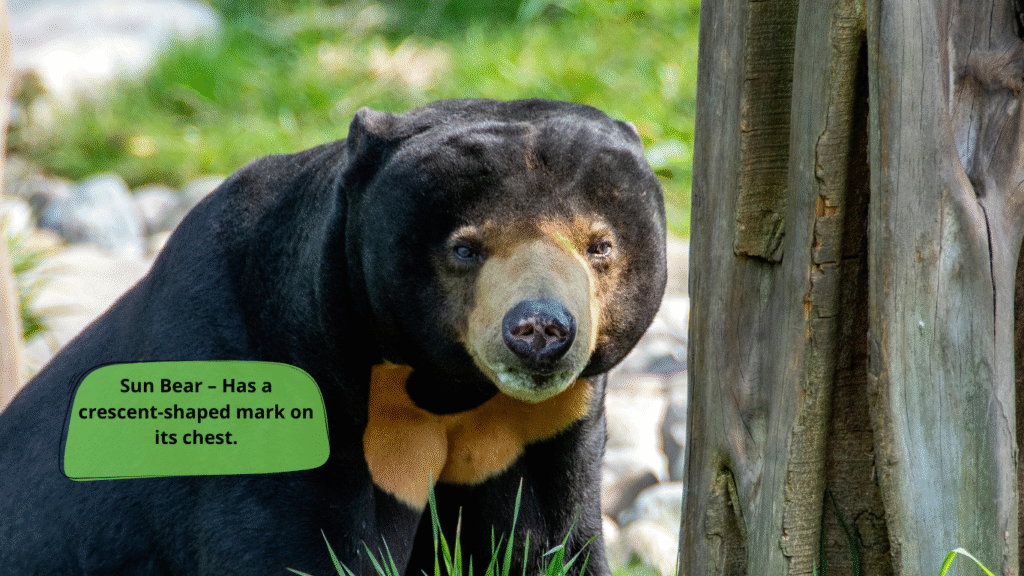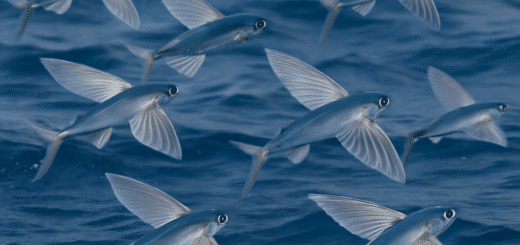Sun Bear: The World’s Smallest Bear with a Big Personality
When people think of bears, they often imagine the mighty grizzly or the majestic polar bear. But tucked away in the dense tropical rainforests of Southeast Asia lives the Sun Bear (Helarctos malayanus)—the world’s smallest and least known bear species. Despite its small size, this rare bear has a huge role in the forest ecosystem and an equally big fight for survival.

What Is a Sun Bear?
The Sun Bear gets its name from the golden, crescent-shaped patch on its chest, which resembles the rising sun. This unique marking is different for each bear, much like a fingerprint.
- Scientific Name: Helarctos malayanus
- Average Size: 4 to 5 feet long
- Weight: 60–150 pounds
- Habitat: Tropical rainforests of Southeast Asia—Malaysia, Indonesia, Thailand, and Borneo
- Conservation Status: Vulnerable (IUCN Red List)
Appearance and Adaptations
With its short, sleek black fur, stocky build, and extremely long tongue (up to 10 inches), the sun bear is built for survival in the jungle. Its long claws and strong jaws help it climb trees, tear apart logs, and extract insects or honey—earning it the nickname “honey bear.”
Sun Bear Behavior and Diet
Sun bears are solitary and nocturnal, meaning they are most active at night. Unlike other bear species, sun bears do not hibernate due to the warm, year-round climate of their tropical habitat.
What Do Sun Bears Eat?
Sun bears are omnivores, with a diet that includes:
- Insects (especially termites and ants)
- Honey and beeswax
- Fruits like figs and bananas
- Small birds or rodents on occasion
This varied diet plays a critical role in seed dispersal and pest control within the rainforest.
The Role of the Sun Bear in the Ecosystem
As a forest dweller, the sun bear helps maintain the health of tropical ecosystems. By digging for insects and breaking open termite nests, it aerates the soil and promotes tree growth. Their droppings help disperse seeds, which encourages plant regeneration.
Threats to Sun Bears
Despite their ecological importance, sun bears face numerous threats:
- Deforestation: Rapid logging and palm oil plantations destroy their habitat.
- Poaching: Sun bears are hunted for their bile (used in traditional medicine), meat, and even as exotic pets.
- Human-wildlife conflict: As forests shrink, encounters with humans increase, often leading to fatal outcomes for the bears.
Conservation Efforts
Efforts to save the sun bear include:
- Protected areas and national parks
- Wildlife rescue centers in Malaysia and Borneo
- International laws banning the trade of sun bear parts
- Public awareness campaigns to reduce demand for sun bear bile and exotic pets
Organizations like the Bornean Sun Bear Conservation Centre (BSBCC) are leading the charge in rehabilitation and education.
How You Can Help
- Avoid products with unsustainable palm oil
- Support sun bear conservation programs
- Raise awareness about the sun bear’s endangered status
- Visit eco-tourism centers that support bear rescue and habitat preservation
Final Thoughts
The Sun Bear may be small, but its impact on the rainforest and its struggle for survival are immense. As one of the world’s most mysterious and endangered bear species, it deserves our attention, respect, and protection.








